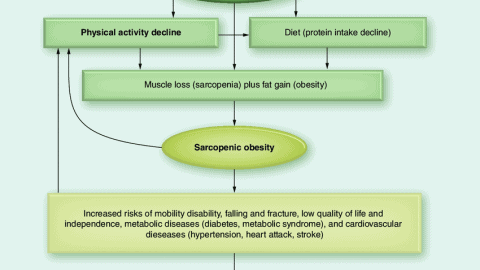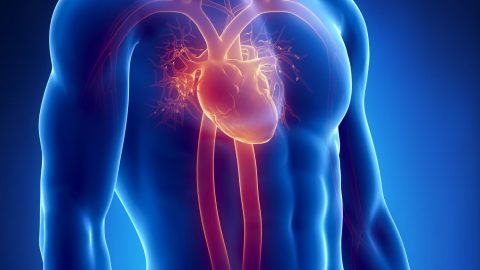Dr. Steve Joyal with comments by Will Brink
There’s a great deal of misinformation about dietary fats, dietary carbohydrates, and their respective effects on lipid metabolism. Is a diet high in carbohydrates the “best” diet ? Do saturated fats raise cholesterol ? What about the response(s) to diets high in carbohydrate and fat in terms of insulin? This article is a brief review of some interesting literature that should help people to understand the issues and facts behind high carb/low fat diets vs lower carb/moderate fat diets.
Let’s examine high carbohydrate diets first. We’ve been told for many years that high carbohydrate diets are superior for both health and athletic performance compared to higher fat intakes, but is this advice actually true?
A nice study done by Jeppesen and colleagues called “Effects of low-fat, high-carbohydrate diets on risk factors for ischemic heart disease in postmenopausal women” (Am J Clin Nutr 1997 Apr;65(4):1027-33) that examined a wide range of metabolic parameters, found that the high carb, low fat group (60% carb, 25% fat) had higher levels of VLDL, triglycerides, and lower HDL than the high fat, low carb group (40% carb, 45% fat). In addition, the high carb, low fat group had higher circulating levels of insulin, and the high carb, low fat group correlated with markers of insulin resistance. And, in addition to insulin resistance causing problems in body composition, insulin resistance is a risk factor for cardiovascular disease by means of the altered lipid profile as noted. Individuals with high total cholesterol/HDL cholesterol ratios are often insulin resistant. ( Reaven GM et al. Individuals with high total cholesterol/HDL cholesterol ratios are insulin resistant. J Intern Med 1998 Apr;243(4):293-8) This should come as no surprise to people who have been following the recent trend in reduced fat, higher carbohydrate diets and the ever increasing rates of bodyfat, insulin resistance, and type II diabetes being seen in the population.
What about the glycemic index of foods, and the effects of different diets on lipids, blood sugar, and weight loss ?
In a study in patients with type II diabetes by Heilbronn , Noakes , and Clifton called “Effect of energy restriction, weight loss, and diet composition on plasma lipids and glucose in patients with type 2 diabetes” recently published in Diabetes Care (1999 June;22[6]:889-95), found that better responses in terms of improvements in lipid profiles and glucose parameters are seen in patients who consume a diet that is lower in carbohydrate, and relatively higher in fat. It is also interesting to note that the rate of weight loss was independent of diet composition in type II diabetics, which is intriguing given that weight loss is notoriously difficult in type II diabetics. However, HDL was reduced on the high carbohydrate diet. In addition, the only way to overcome the triacylglycerol-raising and HDL-lowering effects of low-fat/ high-carbohydrate diets is by moderate exercise and supplementing the diet with n-3 polyunsaturated fatty acids (Gibney MJ. Optimal macronutrient balance.Proc Nutr Soc 1999 May;58(2):421-5).
[Editors note: a growing number of studies appears to show that n-3 fatty acids improve insulin sensitivity, which fits perfectly with the above observations.]
Since supplemental n-3 polyunsaturated fats help blunt the triacylglycerol raising/ HDL lowering effects of high carbohydrate diets, are high (>10% ) polyunsaturated fatty acid diets optimal ?
High intakes (10% or above) of polyunsaturated fats tend to decrease not only LDL, but HDL as well; in addition, there’s also concern that high intakes of polyunsaturated fats may increase the risks of oxidative stress (Eritsland J. Safety considerations of polyunsaturated fatty acids. Am J Clin Nutr 2000 Jan;71(1 Suppl):197S-201S).
[Editors Note 1: Though some research suggests that higher intakes of n-3 fatty acids can reduce both HDL and LDL cholesterol, n-3 fatty acid intake has been strongly correlated with a reduction in heart disease and other pathologies.]
[Editors Note 2: Though previous research suggests that PUFS can increase oxidative stress at higher intakes, some studies suggest that n-6 PUFS increase oxidative stress while n-3 PUFS may in fact reduce it. This suggests the effect of oxidative stress from PUFS is more complicated than the simple level of unsaturation of the these lipids and is likely related to the effects that n-6 lipids can have on pro inflammatory products produced from n-6 lipids. However, increasing the intake of PUFS from either class (i.e. n-3 or n-6) should be accompanied by an increase in anti oxidants]
So what about saturated fats ? How does myristic, palmitic, or stearic acid affect lipid metabolism ? Are all saturated fats bad for us or increase total cholesterol and/or LDL levels?
Well, there’s evidence to suggest that stearic acid is neutral compared to both myristic and palmitic acid in terms of elevating cholesterol; e.g., serum total, esterified and LDL cholesterol were all significantly lower depending on which of these fatty acids are ingested. There are a number of interesting studies in the literature that support this data. One such study supplemented subjects’ diets with synthetic forms of different saturated fatty acids to determine the effects on serum cholesterol (Snook JT; Park S; Williams G; Tsai Y-H; Lee N. Effect of synthetic triglycerides of myristic, palmitic, and stearic acid on serum lipoprotein metabolism. Eur J Clin Nutr 1999 Aug;53(8):597-605)
In fact, stearic acid is poorly incorporated into VLDL as compared to palmitic or myristic acid(s), and is even poorly incorporated as compared to oleic acid ! (Pai T; Yeh YY. Stearic acid modifies very low density lipoprotein lipid composition and particle size differently from shorter-chain saturated fatty acids in cultured rat hepatocytes. Lipids 1997 Feb;32(2))
The bottom line : the major cholesterol-raising saturated fatty acid in the diet is palmitic acid, and, in fact, there is evidence to suggest that stearic acid is quickly converted into a mono-unsaturated fatty acid in vivo, and thus, the real culprit in terms of saturated fatty acids and their respective negative effects on cholesterol are due to palmitic acid, and not stearic acid.(Grundy SM, Denke MA. Dietary influences on serum lipids and lipoproteins. J Lipid Res 1990 Jul;31(7):1149-72)
[Editors Note: Guess which fat the body produces from excess carbohydrates? If you guessed palmitate, you go to the head of the class! The reason why the high carb low fat studies above found negative blood lipid changes from higher carb intakes as opposed to lower carb moderate fat intakes?]
In addition, the media has blitzed the public at large about the “evils” of saturated fats in the diet . However, there is epidemiological evidence to support that if saturated fats were significantly reduced from the diet (8-10% saturated fat diet), this change would only increase life expectancy by several months! (Grover SA, et al. Life expectancy following dietary modification or smoking cessation. Estimating the benefits of a prudent lifestyle. Arch Intern Med. 1994 Aug 8;154(15):1697-704). Considering how vilified the media and other groups have made saturated fats over the past few decades, this is not very impressive to say the least.
So, what does it all mean ?
Don’t fall for the hype from the mega-carb gurus who view all fats as an evil enemy sure to ruin your health. It is simply not true and is far more complex than the high carb low fat gurus want us to believe.
The best advice at this time? Don’t eat a diet that is overly high in carbohydrate (65% or higher), and eat a diet that is adequate in fat (20-25% but <35%). The bulk of fat calories should be coming from mono-unsaturated fatty acids (i.e. olive oil, avocados, etc.) and saturated fatty acids that are high in stearic acid but not high in palmitic acid. Also, don’t forget to take in adequate amounts (<10%) of essential fats from polyunsaturated fatty acids (PUFS). This is a more balanced and healthy way to eat for performance and fat loss in the long run.
[Editors Note: I particularly favor the n-3 PUFS from flax, and fish oils. The ratio of PUFS is as important as the total amount of PUFS consumed and most people get adequate n-6 PUFS with virtually no n-3 PUFS, which can lead to health problems of its own]
Will Brink is the owner of the Brinkzone Blog. Will has over 30 years experience as a respected author, columnist and consultant, to the supplement, fitness, bodybuilding, and weight loss industry and has been extensively published. Will graduated from Harvard University with a concentration in the natural sciences, and is a consultant to major supplement, dairy, and pharmaceutical companies.
His often ground breaking articles can be found in publications such as Lets Live, Muscle Media 2000, MuscleMag International, The Life Extension Magazine, Muscle n Fitness, Inside Karate, Exercise For Men Only, Body International, Power, Oxygen, Penthouse, Women’s World and The Townsend Letter For Doctors.
He’s also been published in peer reviewed journals.
Will is the author of the popular e-books, both accompanied by private members forum access , Bodybuilding Revealed & Fat Loss Revealed.
You can also buy Will’s other books on Amazon, Apple iBook, and Barnes and Noble.







